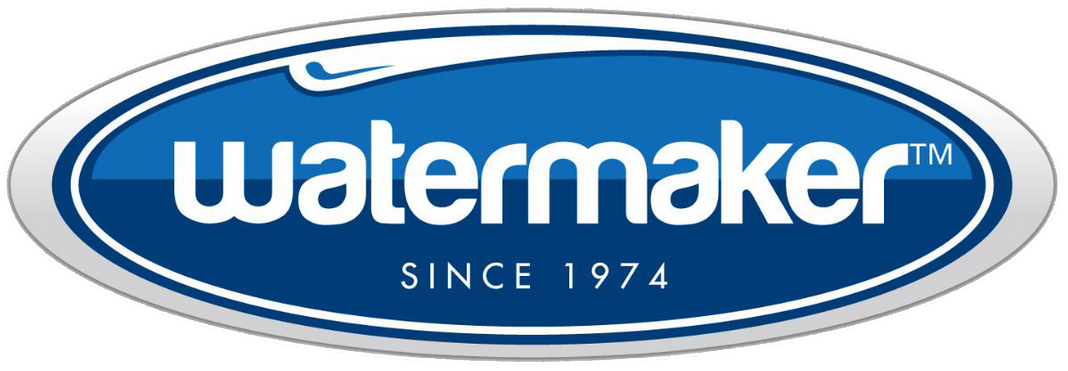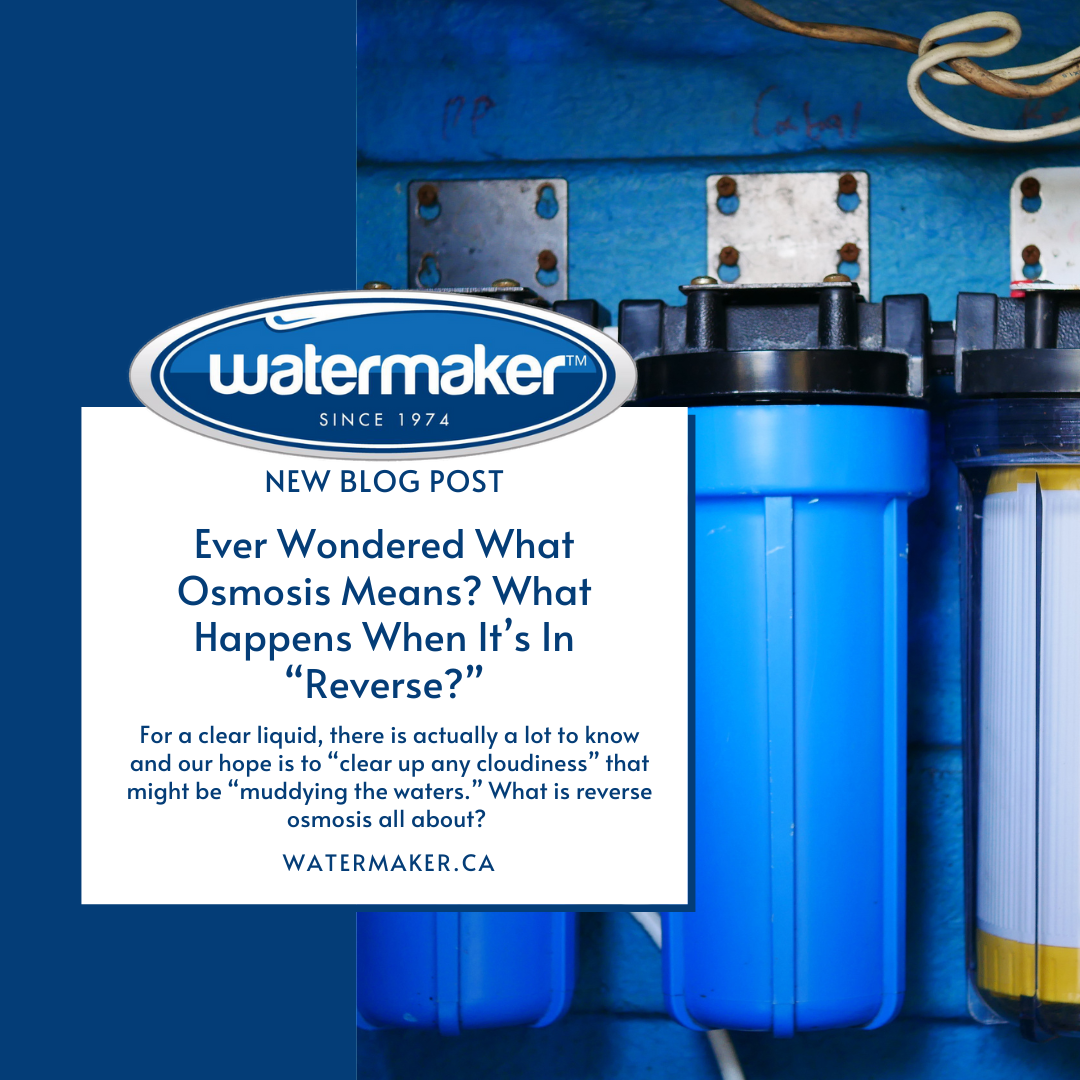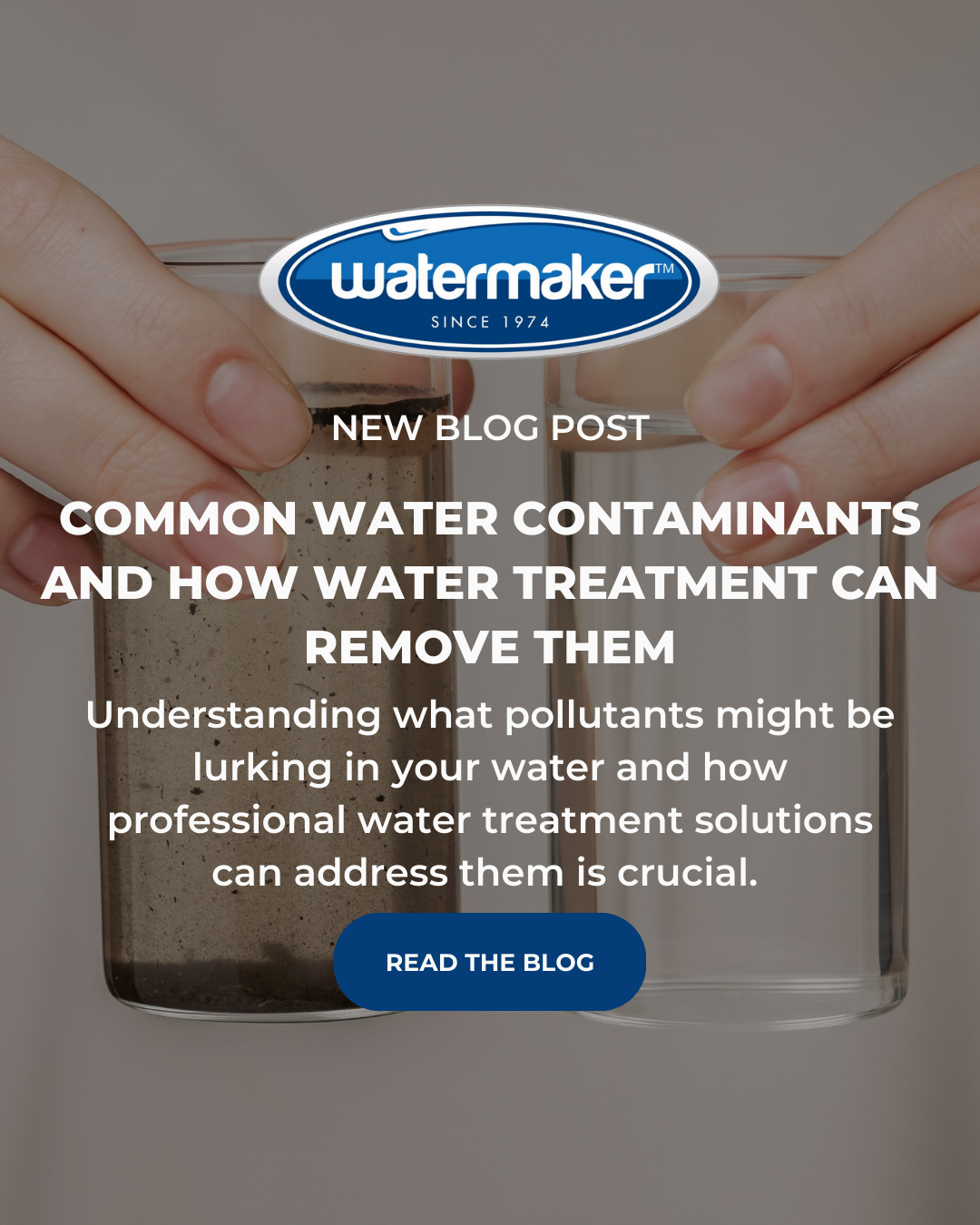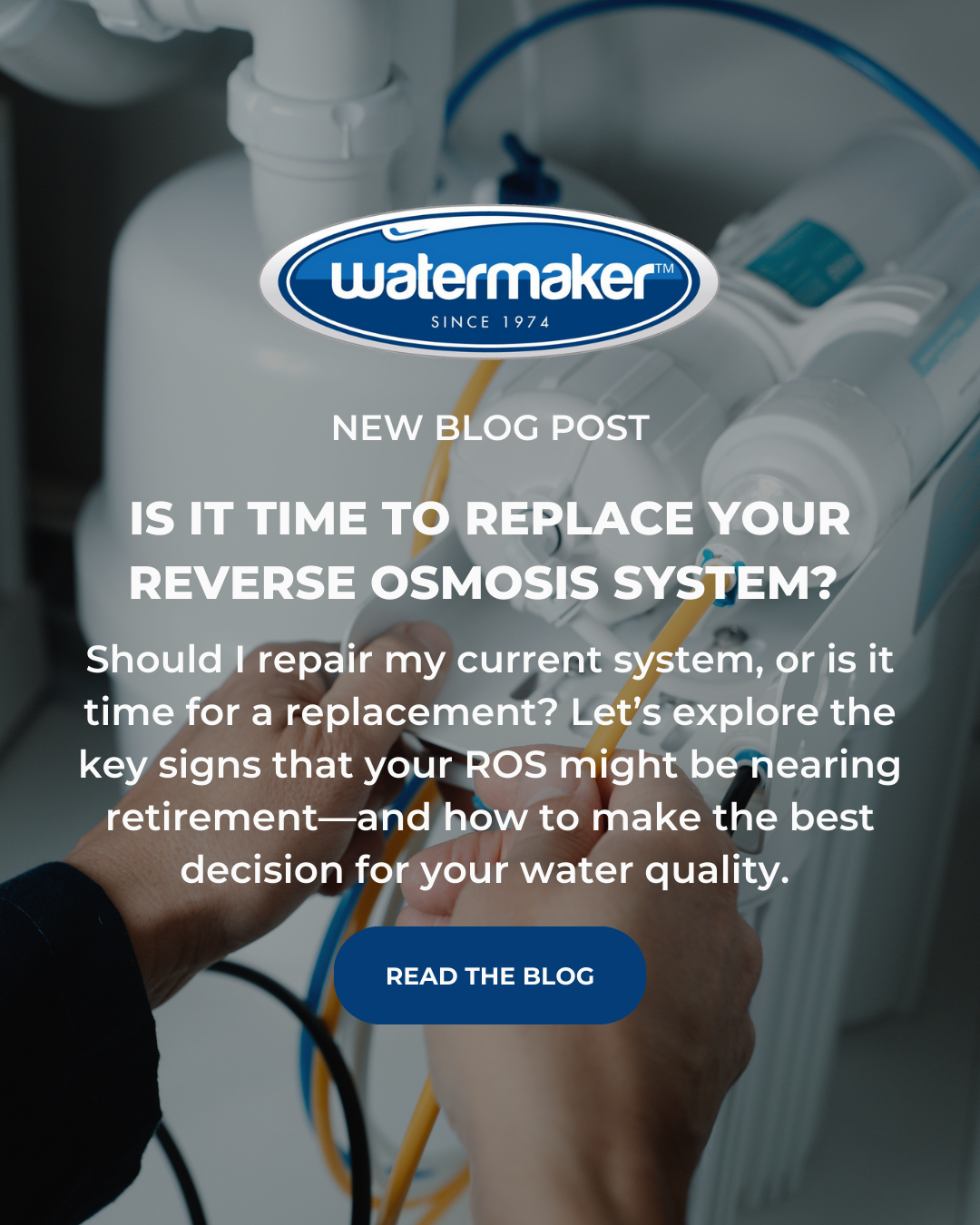Reverse Osmosis: Your questions answered
Reverse Osmosis Systems
Osmosis is a term water aficionados are quite familiar with and even if you are not a water expert, chances are you’ve heard some chatter about reverse osmosis before. But do you know what reverse osmosis is really all about? It’s ok if you don’t, that’s why Watermaker is here, to help you understand more about water osmosis systems! For a clear liquid, there is actually a lot to know and our hope is to “clear up any cloudiness” that might be “muddying the waters.” What is reverse osmosis all about?
The Highlight Reel
The quick definition of reverse osmosis is that it’s a process that applies pressure to force water through a semi-permeable membrane in order to purify it. In other words, it is a form of water purification that relies on both the membrane and force, to separate unwanted particles from source water, to provide safe drinking water.
Why Do We Need Reverse Osmosis
This process of water purification removes pollutants and/or contaminants that can be harmful to our health. These include:
- Parasites such as cryptosporidium that can cause gastrointestinal illness
- Large amounts of sodium which can be harmful to those on low sodium diets, with kidney ailments or high blood pressure
- Lead from older city water systems that are decaying and lead is leaching into the water supply
- Organic materials
- Pesticides
- Other potentially harmful chemicals like arsenic, mercury, and even excessive amounts of fluoride or chlorine
The statistics tell us that most reverse osmosis systems will remove between 90 and 95% of contaminants from our drinking water and this is particularly important for families with young children, those who are immune-compromised or undergoing cancer treatments. It’s another tool in your toolbox to help you and your family maintain good health – especially when most health experts advise that drinking up to 8 glasses of water per day is important!
Reverse osmosis is a powerful filtration system that relies on force. Normal osmosis sees water flow naturally through a membrane but reverse osmosis applies “an external pressure to reverse the natural flow.” Forcing water through this semi-permeable membrane (with Nano filtration pores as small as .001 micrometers!) is what ensures the separation of larger, and potentially harmful, molecules and results instead in a safe, clean, and almost sodium-free glass of water. The process has been around for hundreds of years after first being described in 1748. In the 1950s researchers began refining the process in earnest, studying whether seawater could be desalinated and turned into fresh drinking water. There’s a Canadian component too as one researcher with the National Research Council of Canada contributed to refining the process. Today, there are over 16,000 desalination facilities around the world, removing salt and other ions from seawater to make safe drinking water for human consumption.
The reverse osmosis systems you’ll find available at Watermaker are further augmented by an activated carbon absorption block filter located where the filtered water is stored. This results in an odourless water that has also had any unusual tastes removed being instantly ready when you turn on your faucet. Systems are BPA-free, can be controlled electronically, and are Wi-Fi enabled. If you would like to learn more about reverse osmosis – and maybe even what “Nano filtration” and “micrometers” actually means – contact a member of the Watermaker team today! We offer water treatment systems that meet your lifestyle, health and family needs because we believe, “Better Water, Better Life!”



